History of DiSC®
Decades of research and real-world applications
Engaging learners
Knowing that how learners engage with concepts and content is as important as what they learn, a new learning experience was developed in 2020. The Catalyst™ platform was designed to make it easier for organizations to integrate Everything DiSC into their work on an ongoing basis. It connects independent learning and facilitated sessions in a single, personalized space.
Catalyst was designed to support virtual and/or face-to-face facilitation. The content was also reworked to enable shorter, stand-alone training sessions. First released for Everything DiSC Workplace® and Everything DiSC® Agile EQ™, the Everything DiSC® Management profile was added in December 2021.
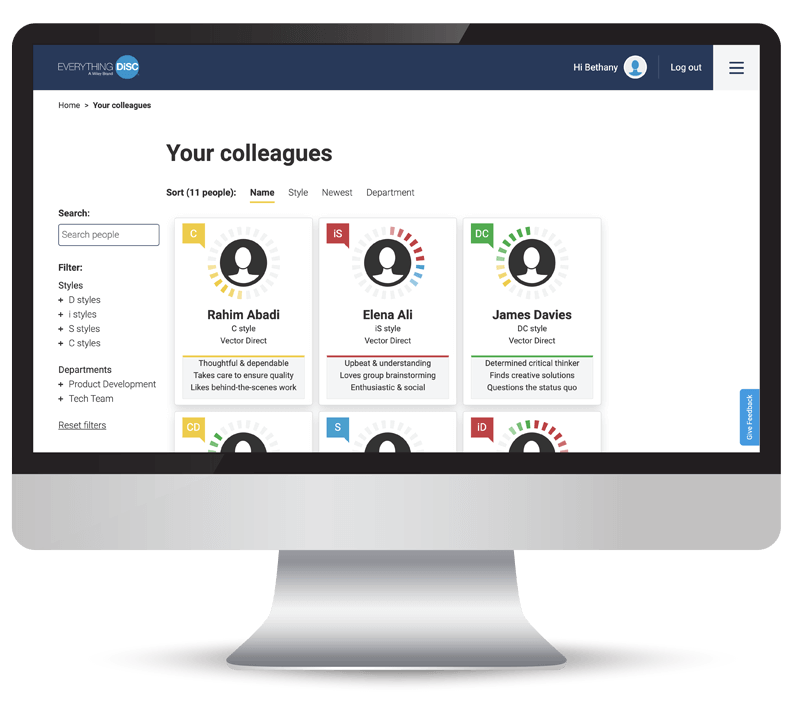
40+ years of research and testing
From the first assessment to be built on William Moulton Marston's model of behavior to the robust suite of Everything DiSC® profiles, DiSC has a history based on research and real-world applications. For over 40 years, the publishers of DiSC have worked to improve the assessments, reports, and facilitation.
Response to evolving workplace needs
The most recent Everything DiSC profiles, Agile EQ and Productive Conflict, were developed in response to the soft skills necessary in today's rapidly evolving workplaces. Teams no longer have a hierarchical structure, but are networked across departments or disciplines. Teams are expected to innovate, which isn't possible without productive conflict. Decisions are more often made by teams and not a single individual. Everything DiSC profiles support this rise in an agile workforce by creating more self-aware and responsive team members.
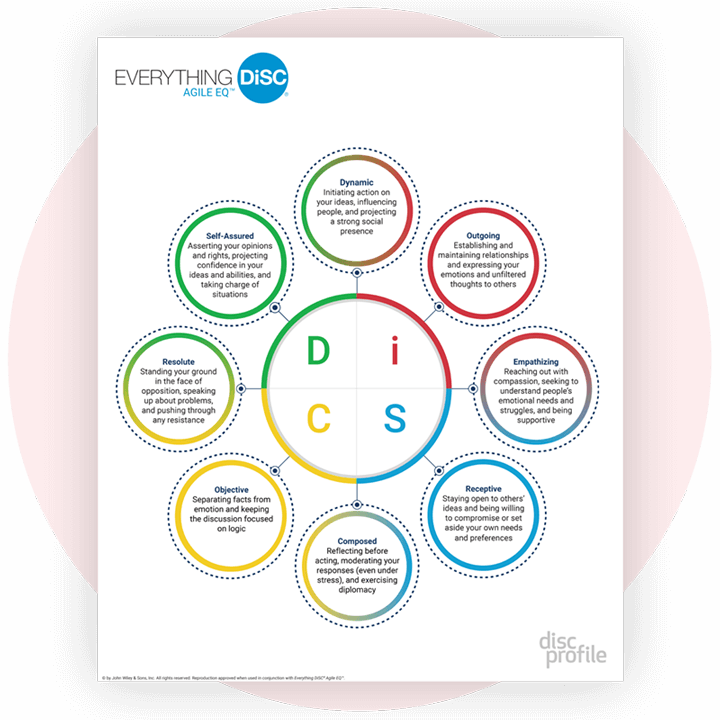
Like all Everything DiSC products, these profiles and their facilitation materials went through several rounds of beta testing to ensure that the profiles were meaningful, engaging, and actionable.
Increased accuracy
In a continuing effort to make DiSC a more valid and reliable instrument, all Everything DiSC assessments were updated in 2013 to a computerized adaptive testing format. Adaptive testing allows an assessment to change depending on a respondent's previous answers. This is useful in cases where the results of a standard assessment are inconclusive. In these instances, the Everything DiSC assessment will ask the respondent additional questions to reduce ambiguity in their results.
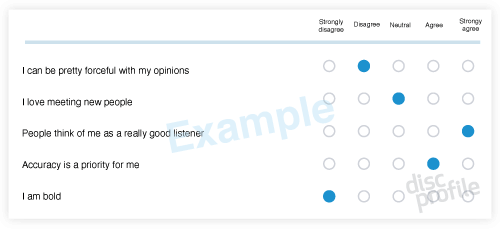
Adaptive testing is the latest improvement to increase the accuracy of the Everything DiSC assessment and make the feedback more personalized and relevant for users. The previous change to the assessment was made in 1994 when new items were added, non-functioning items were removed, and the overall reliability of the instrument increased.
Improved reporting
With MyEverythingDisc™, introduced in 2017, and Everything DiSC on Catalyst™, introduced in 2020, users can view and share their own profiles, create comparison reports, and learn more about the history behind DiSC.

Everything DiSC Comparison Reports were launched in 2009. These reports allow for two people to compare themselves on not only their DiSC style, but also on a series of basic personality traits, such as careful vs. daring or skeptical vs. accepting.
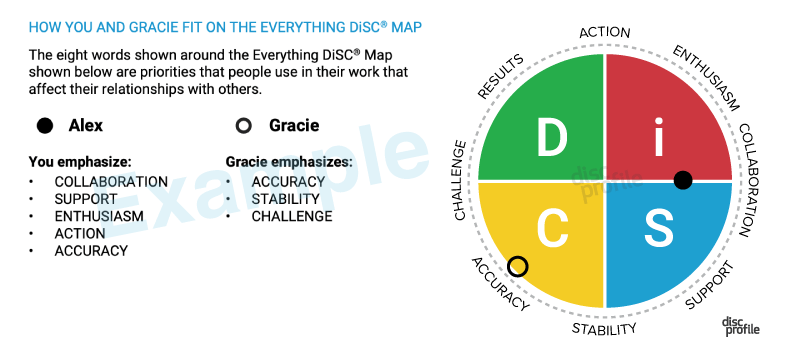
In the early 2000s, a new way of presenting one's style was introduced. Instead of using the traditional graph model, the circumplex or dot representation was introduced. This visual proved simpler, more intuitive, and more relevant to readers. One of the most powerful aspects of the DiSC circle is that it provides an easier way to show the relationship between two people or among a group in a straightforward, visual manner.
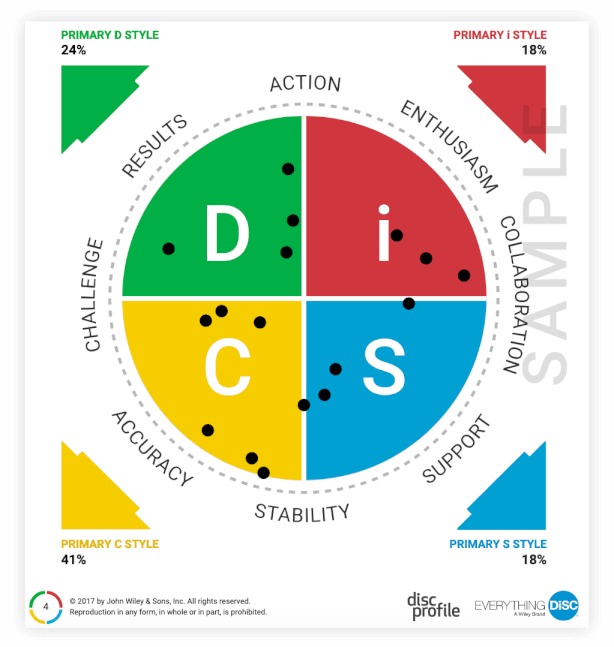
A new measurement—priorities—was also added to this circumplex model. The eight words around the Everything DiSC map are called priorities, or the primary areas where people focus their energy. These priorities labels differ by application, so for an example, an iD style will prioritize Enthusiasm in Sales, but Expression in Productive Conflict. In Agile EQ, priorities are replaced by mindsets. The iD mindset is Outgoing.
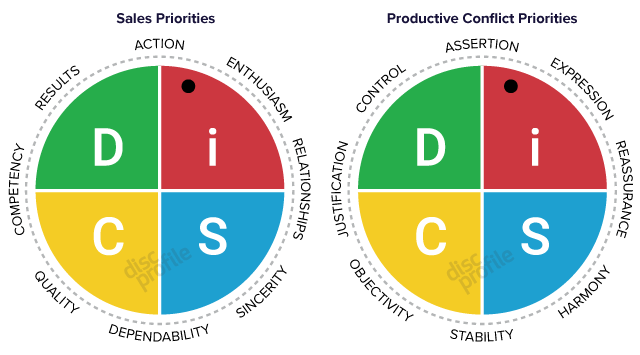
The classics
From the 1970s through the 1990s, most DiSC profiles focused primarily on personal insight.
In the 1970s, John Geier, a faculty member in the University of Minnesota’s Department of Health Sciences, formed a company called Performax (which eventually became Inscape Publishing and is now part of the Professional Development division at Wiley) that was the first publisher of a DiSC assessment.
A research effort was launched in 1994 to improve the DiSC instrument, which was named the Personal Profile System 2800 Series (PPS 2800). This version of the PPS is still used today, although it has since been renamed DiSC® Classic.

The foundation
The DISC Model of Behavior was first proposed in 1928 by William Moulton Marston, a physiological psychologist, in his book Emotions of Normal People. Marston made a deliberate decision to focus only on psychological phenomena that were directly observable and measurable through objective means. From his research, Marston theorized that the behavioral expression of emotions could be categorized into four primary types, stemming from the person’s perceptions of self in relationship to their environment. These four types were labeled by Marston as Dominance (D), Inducement (I), Submission (S), and Compliance (C). He created a model that integrated these four types of emotional expression into a two-dimensional, two-axis space.
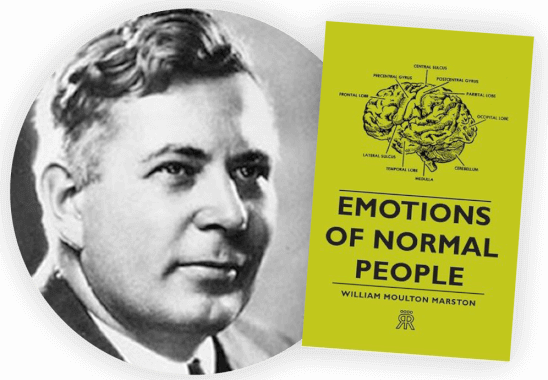
Because Marston himself had little interest in theoretical concepts of personality or temperament, he never created a psychological instrument to measure his model. The contemporary understanding of DISC maintains some core principles advanced by Marston, but the current presentation of the model also incorporates many additions and changes that are informed by advances in psychological measurement and theory.
The history of DISC measurement begins in the 1940s with industrial psychologist Walter V. Clarke. Clarke built a test for personnel selection called the Activity Vector Analysis. After collecting and analyzing the data on this instrument, he discovered that the four factors produced from the data (aggressive, sociable, stable, and avoidant) sounded a lot like DISC. Clarke concluded that the data could be best explained by Marston’s model of human behavior.
A staff member of Walter Clarke Associates developed an assessment which they called Self Discription. Factor analyses of the Self Discription produced two factors that closely approximated the underlying axes of Marston’s model, lending considerable empirical support not only to the structure of the model he proposed, but to Clarke’s earlier claim that a DISC-based instrument could be created.
Many versions of personality or behavioral assessments have been created based on Marston's DISC model. We proudly offer the original, DiSC Classic, and the more accurate and memorable Everything DiSC suite of assessments that have taken Marston's model, refined it, expanded upon it, and made it applicable to today's workplace.
Why is i small and not capitalized in Everything DiSC?
The small i was a marketing decision used to distinguish DiSC Classic and Everything DiSC from other assessments or quizzes based on the DISC model. The uncapitalized i is part of the DiSC trademark held by John Wiley & Sons.
More tools to explore
DiSC History, an excerpt from the Everything DiSC Manual

